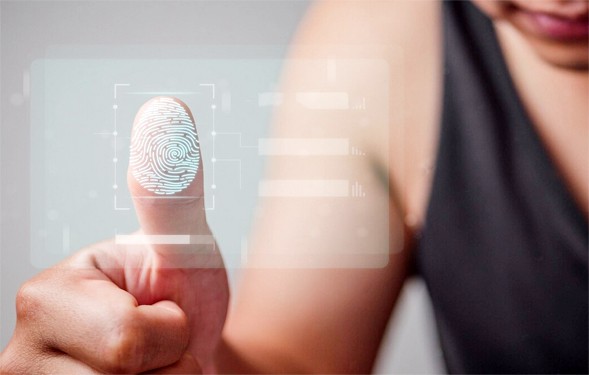
Biometric Attendance: Tracking attendance is crucial in today’s fast-paced world. It is necessary for sectors like education, healthcare, and the workplace. Biometric attendance systems use unique physical or behavioral traits to identify individuals, providing a reliable and efficient solution.
Tracking attendance is vital for organizations and institutions. It helps them run smoothly, use resources effectively, and be transparent. Tracking attendance is essential for both schools and businesses. Accuracy is crucial for achieving success in this task.
AI is revolutionizing biometric attendance. AI-powered biometric systems can significantly improve accuracy, security, and efficiency compared to traditional methods.
Understanding Biometric Attendance Systems
1. Concept of biometrics and its application
The measurement and analysis of unique physical or behavioral characteristics, such as fingerprints, facial features, iris patterns, and voice recognition, are all part of biometrics. These characteristics are used to authenticate or identify people, making them perfect for attendance tracking and security applications.
2. Common biometric modalities used in attendance systems
Biometric attendance systems frequently employ techniques such as fingerprint scanning, facial recognition, iris scanning, and voice recognition. Each modality has advantages and disadvantages and should be chosen depending on individual use cases and requirements.
3. Advantages of using biometric attendance over traditional methods
Biometric attendance has various advantages over traditional systems such as paper-based registers or identity cards. It removes the possibility of buddy punching, decreases administrative overhead, reduces errors, and delivers real-time data to allow for quick decision-making.
The Need for Enhanced Accuracy in Attendance Tracking
1. Identifying the challenges faced in traditional attendance systems
Traditional attendance tracking methods are error-prone, time-consuming, and easily manipulated. Manual processes can result in erroneous records, which can have an impact on payroll, resource allocation, and overall productivity.
2. Consequences of inaccurate attendance records for organizations and institutions
Attendance records that are inaccurate can result in financial losses, compromised security, and a lack of accountability. It may have an impact on funding or lead to distorted academic ratings in educational institutions.
3. Addressing the potential concerns regarding privacy and security
Because biometric data contains sensitive information, privacy and security are critical concerns. To ensure the safe use of biometric attendance systems software , strong encryption mechanisms, secure data storage, and adherence to data security standards are essential.
The Integration of Artificial Intelligence in Biometric Attendance
By continuously learning from data, AI improves biometric attendance systems, making them flexible and self-improving. It allows systems to understand patterns, spot abnormalities, and improve recognition accuracy over time and enhancing SAAS platforms .
Machine learning algorithms, which train on large datasets to enhance recognition accuracy, play an important role in biometric attendance systems. They allow systems to handle biometric data variances such as changes in facial expressions or lighting conditions.
AI-powered biometric attendance systems analyze data in real time, delivering actionable insights and enabling quick decision-making. This data can be used by organizations and institutions to optimize resource allocation and improve overall efficiency.
Improving Identification Accuracy with AI
1. Handling variations in biometric data
AI assists in addressing the issues given by differences in biometric data, ensuring reliable identification even in a variety of environmental conditions or physical changes in persons.
2. Enhancing user enrollment processes through AI-driven feedback
During the enrollment process, AI-powered feedback mechanisms can help users to produce better samples, resulting in greater accuracy and a more smooth experience for individuals.
3. Case studies of organizations benefiting from AI-powered biometric attendance
Numerous enterprises and institutions have reaped significant benefits from integrating AI-powered biometric attendance systems. Case studies demonstrate improved accuracy, efficiency, and cost savings.
Mitigating Security Risks and Ensuring Privacy
1. Biometric encryption and secure data storage
Robust encryption algorithms preserve biometric data during transmission and storage, preventing breaches and illegal access.
2. Implementing liveness detection techniques to prevent spoofing
Methods for detecting liveness ensure that biometric samples gathered are from living people, preventing fraudulent efforts to manipulate the system.
3. Regulatory compliance and ethical considerations in using biometric data
To ensure ethical and responsible use of biometric data, organizations must follow relevant data protection and privacy rules.
VII. AI and Biometric Attendance in Educational Institutions
AI-powered biometric attendance systems automate processes and reduce administrative constraints in educational institutions, making attendance tracking easier. Biometric attendance data insights can help instructors uncover patterns and modify instructional approaches to boost student engagement and academic performance.
By giving real-time reports on student attendance and performance, biometric attendance systems can increase parental involvement.
VIII. AI and Biometric Attendance in the Workplace
1. Optimizing workforce management and payroll processing
Artificial intelligence-powered biometric attendance solutions simplify worker management, resulting in more accurate payroll processing and resource allocation.
2. Improving employee productivity and accountability
Accurate attendance tracking develops an accountability culture, which leads to increased employee productivity and overall performance.
3. Case studies of companies experiencing efficiency gains with AI-based attendance systems
Adopting AI-powered biometric attendance systems has enhanced efficiency and lowered operating expenses in businesses growth across multiple industries.
Future Trends and Challenges
AI technology is constantly growing, and future improvements are likely to improve the accuracy and functionality of biometric attendance systems even further. The widespread implementation of biometric attendance systems may confront infrastructure, financial, and user acceptance problems. Addressing these concerns through education and awareness can help with implementation success. Maintaining ethical standards and protecting biometric data privacy will be critical for public trust and acceptance as AI-driven biometric devices become more common.
Conclusion
AI has revolutionized biometric attendance systems, significantly improved accuracy and efficiency, and
overcoming the limitations of traditional methods. The integration of AI in biometric attendance has led to improved decision-making, enhanced security, and increased efficiency across various sectors.
With continuous advancements in AI and biometric technology, a more efficient and secure future is on the horizon, promising to transform attendance tracking and optimize operations for organizations and institutions alike.



